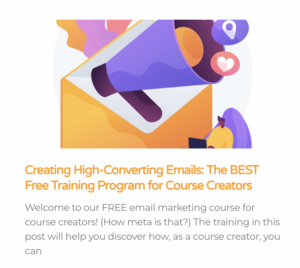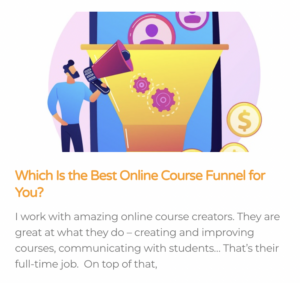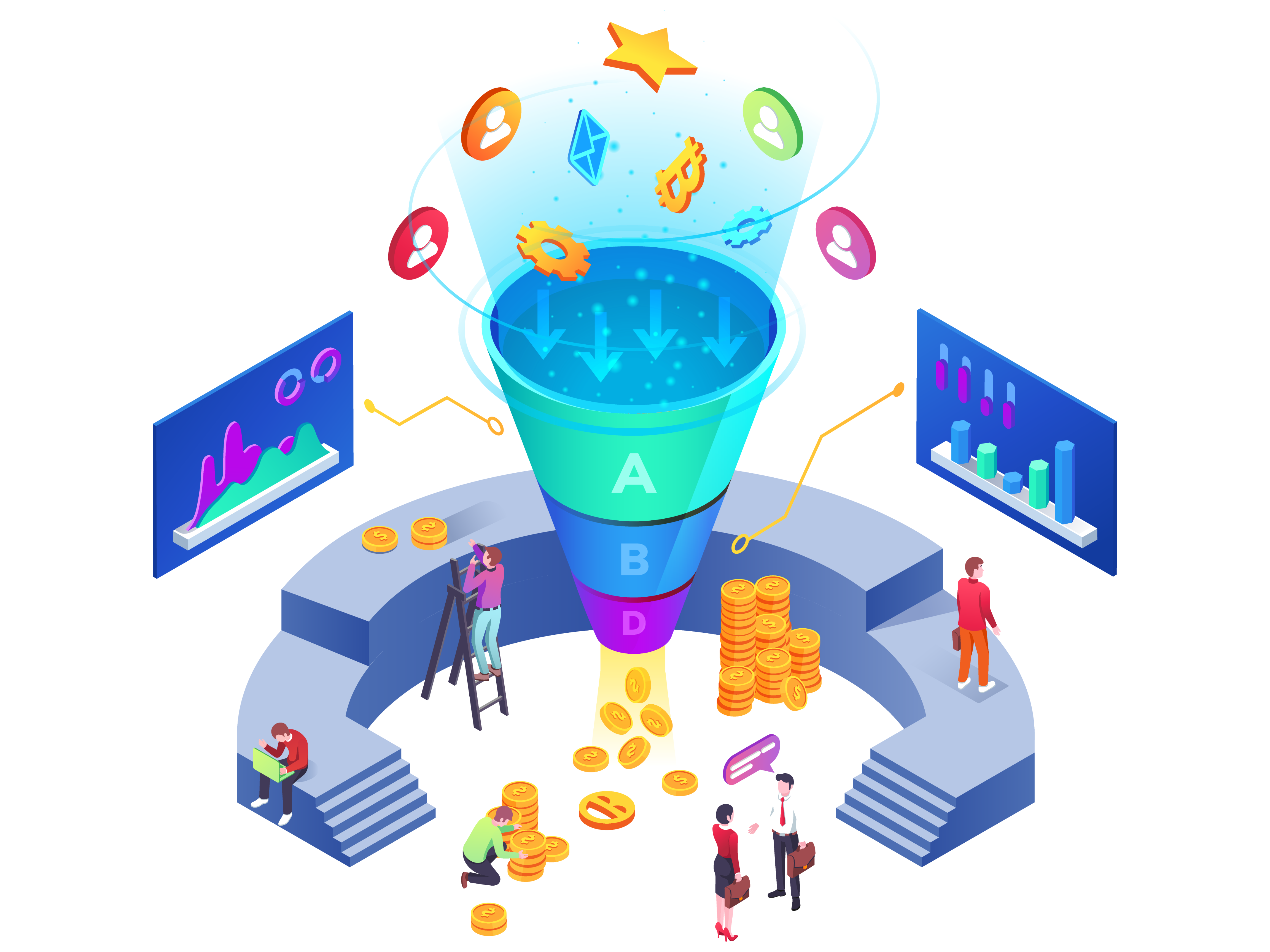Are you struggling to figure out how to sell your online course?
Do you want to make sure that the right people see your course and it becomes highly profitable?
This comprehensive guide to selling online courses will show you exactly how to launch with momentum, racking up lots of sales, and then scale your course into an everyday profit machine.
It will cover what you need to know to sell courses online successfully, including how to:
Pinpoint the right course offer and content: We’ll cover how to create an offer for your course that speaks right to your audience’s deepest desires. And we’ll talk about how to back that offer up with a course that blows away your students and helps them achieve their goals.
Get your online course noticed: You may have the best online courses out there. But if only a fraction of the people who should know about it do, you’re missing out on A LOT of sales. This guide will show you how to get your online course noticed by the right people. From using SEO to social media to OPA and other attraction engines, we’ll help you find the best way to sell online courses.
Create a waiting list of ravenous fans: A nurtured and primed “ready-to-buy” waiting list is the secret to every successful online course launch. We’ll delve into how to create a large and constantly replenished waiting list of eager students.
Maximize your profits: You’ll learn how to build a course sales funnel that converts new customers day in and day out… even when you’re not launching or promoting your online courses.
Scale your online course’s success: Launching with a bang is one thing. But to turn your online course into a profitable business that fuels the lifestyle you want, you have to be more than a one-hit-wonder. We’ll round out this post by showing you what it takes to scale your online course into a 7-figure plus business.
Now that you know where we are headed, are you ready to learn how to sell online courses? Let’s dive in!
Create a High-Value Proposition for Your Online Course
If you want to have a successful online course, it has to stand out. It needs to offer your target audience something they truly value.
It has to have a hook that will reel in your potential customers.
You can show your future students that your course has what they need by creating a high-value proposition.
Here’s how to create a high-value proposition for your course:
Pinpoint your audience
First, identify your target audience. Who is your course designed to help? For example, your course might be for non-native speakers who want to learn English. Or maybe your course is for Dog Owners who are trying to train their new puppies. OR maybe you’re targeting course creators who want to learn how to build the perfect online course sales funnel.
Uncover your students’ biggest pain points
After pinpointing your course’s audience, you can uncover their specific pain points and high-value problems. You can do this using surveys. Or you can do audience interviews. Or, if you don’t have access to an audience yet, read comments on YouTube videos in your course niche.
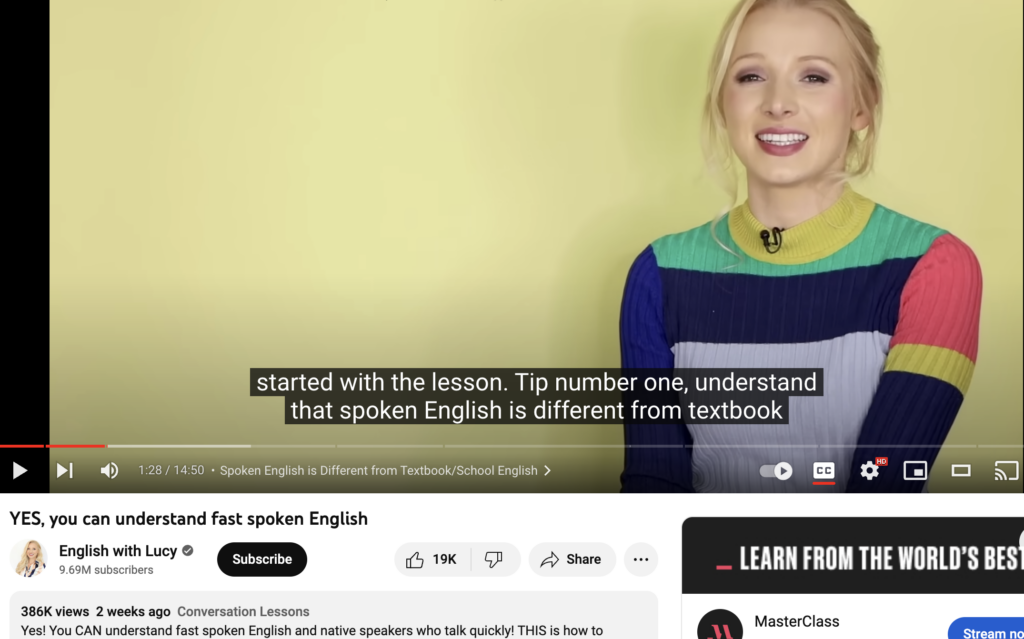

Read reviews of courses that are similar to yours. Identify what’s working and what’s missing to find your audience’s pain point.
Create a course offer that fulfills your audience’s desires
The surefire way to make sure you sell tons of courses is to connect your course’s value proposition with your audience’s needs.
And if you’ve uncovered your audience’s biggest needs, your value proposition is simply an offer that fulfills those needs.
For example, look at this course on digital portraits. The course creator uncovered that portrait work was a problem for digital artists. And their course offers to help their target audience Create Stunning Pro Level Portraits.
Your course’s high-value proposition doesn’t have to be the headline or tagline for your course. And it may evolve over time as you learn about your audience.
But the best way to ensure your course will sell is to have offers that fulfill a high-value need.
Also, once you know the specific problem your course needs to solve, creating your online course becomes much easier.
In this day and age, the market is flooded with courses on general topics.
If your course content is laser-focused on helping your audience solve their problem and achieve their goals, it will stand out from the others.
In turn, your course will have a much higher likelihood of becoming organically successful.
Attract the Right Audience to Your Online Course
The most critical thing to your online course’s success is to have a steady flow of potential students coming your way, visiting your website, and checking out your course sales page.
There are a lot of different ways to attract this audience.
You’ll hear some gurus profess that social media is the best way to get in front of your target audience. Others will tell you SEO is THE solution to attracting students. And yet others swear by partnerships.
So which option is best? What is the best way to attract students to your online course?
As you may have guessed, no one “best way” fits every online course business.
And with more content course creators and course businesses trying to attract attention than ever, there’s a lot of competition out there.
So your best course of action is to leverage the marketing channels and strategies that suit your skills.
What is your most attractive skill?
The truth is unless you’re already a celebrity in your niche… and even if you are… creating content that attracts an audience in droves is hard.
It takes commitment. It takes dedication. It takes making a ton of content to get the one or two hits that will flood your site with traffic and your courses with students.
So the best way to make this grind to the top a little easier (while also having fun with your marketing efforts) is to create content on a channel that features your talents.
Writers: Create SEO-optimized content
Creating SEO-optimized articles is one of the most common ways course creators attract new students. And it’s a great attraction channel… especially if you enjoy or have a talent for writing. (And even if you don’t, these days, with the assistance of A.I., anyone, including this writer, can crank out blog articles.)
SEO is so effective because most of your potential students don’t start their customer journey by seeking a course. They start by looking for a solution.
They type questions into Google and other search engines looking for answers. If your blog content shows up as a featured answer in the search results, you have a great chance to help and hopefully hook that potential customer. (More on that in a bit.)
The bottom line is you love writing about your course subject. So pair your writing skill with SEO and make that your attraction channel.
Show Stoppers: Use your social influence
Are you a natural on camera? Do you love flipping your phone open and recording a quick video about what’s happening in your area of expertise?
If you do, social media is likely your best attraction channel.
You could argue that since online courses are mostly delivered using video, every course creator should have at least a small presence on YouTube.
But there’s a bit of difference between social videos and scripted, produced course videos.
Also, not everyone enjoys or likes using social media. If you do, your audience is out there. Figure out which platform they use the most. Start uploading as much content as you can.
Then, provide mini-answers to the problems and needs you uncovered in your audience research. And every now and then, point people to your website and courses to learn more.
You’re a talker: Start a podcast
Are you at your best when you’re just chatting away? If so, then you’re probably a natural podcaster. Podcasting is a channel that’s still growing. It’s also a great way to attract “guest experts” who you can develop a relationship with and then partner with down the road.
Speaking of podcasting, I hear the best podcast on how to sell an online course is this one:
Networkers: Leverage OPA (Other People’s Audiences)
Some people are natural networkers. Everywhere they go, they are making new contacts. If you’re one of those folks, you have a talent that can help you grow your audience rapidly.
Because one of the fastest way to get exposure for your courses is to get other established experts to promote you to their audiences.
All it takes is one big podcast interview, guest webinar appearance, or even email mention to grow your audience by thousands.
So if you’ve got a talent for networking, get out there and partner with someone who already has direct access to your target audience.
Starting from scratch: Do a 90-Day Challenge
When you’re first starting out, there’s no way around it… creating the content that will become your primary attraction engine for your course is hard.
One way to get over the hump quickly is to dedicate yourself (or your team) to a 90-Day Challenge.
Choose a marketing channel that suits your skills… blogging, Instagram, TikTok, Facebook, YouTube, etc. … then for 90 straight days publish new content.
You’ll be surprised how much better you get at creating content and promoting your course business after 90 days.
You will also learn a ton about your market, your target audience, and their needs.
And more than likely, one or two pieces of the content you create will attract thousands of new people to your website and hundreds of new potential customers to your email list and courses.
Speaking of your email list, let’s talk about that now…
Stock Your Waiting List
There’s one undeniable truth about launching and selling your course.
You can’t have a successful launch without a waiting list.
In fact, when it comes to selling courses, the most important marketing idiom of all time is…
“The money is in your list.”
We just talked about why publishing content is vital to attracting your target audience to your site.
And the reason to attract your target audience to your website is to sell them your course get them to sign up for your email list.
Okay, this is a bit counterintuitive. Yet, bear with me here.
Most people hitting your website for the first time won’t immediately buy your course. But there’s a decent chance if what they saw interested them, they’ll sign up for your email list.
Your email list is the entrance to your on-site course funnel. And it’s the most important asset you’ll own for your course business.
For the course creators we work with, email outperforms all other sales channels 3 to 1.
Offer a lead magnet
A lead magnet is a free incentive you offer in exchange for someone opting into your email list.
To break it down into steps, here’s how a lead magnet works…
Someone visits your website. On your site, you show them they can get some kind of exclusive content or offer for signing up for your email list. They opt-in (i.e., sign up for your list). And you deliver the incentive you promised them.

The lead is the new subscriber. And the magnet is what you offer to entice that subscriber to sign up for your list.
The types of lead magnets that work best for online courses typically include things like:
- “Behind the scenes” video content
- A calculator or scorecard
- A plan or checklist
- A mini-course
- Industry reports or guides
- Templates
The best lead magnets give your audience a small taste of what you’ll teach them in your course.
They offer something that’s easily consumable.
And they answer a burning question or solve a simple yet urgent problem.

Here are some examples of lead magnets that produce high email opt-in rates and also lead to a lot of course sales:


Once you’ve created a lead magnet, you want to feature your lead magnet offer all over your site. You can display it above the fold on your homepage. Or in a pop-up box that triggers on scroll.
And in the content of your blog articles.
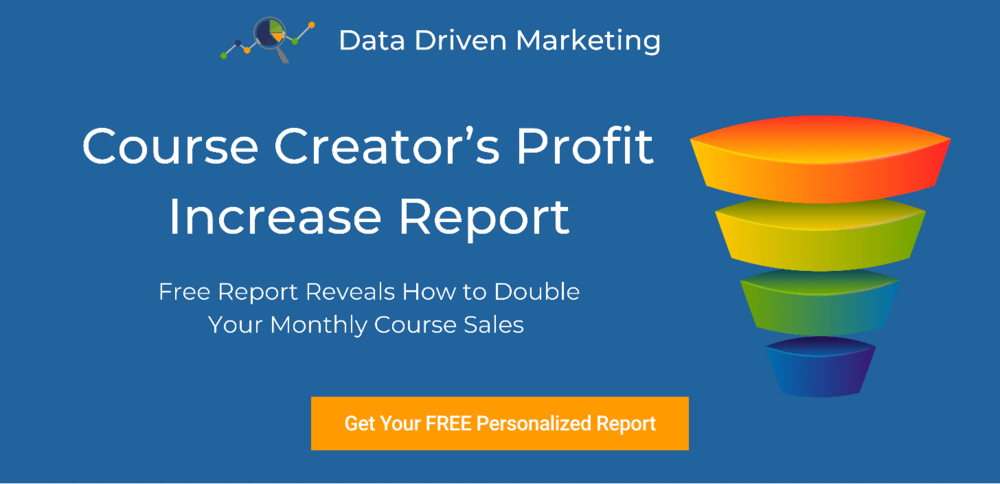
You also want to create landing pages for your lead magnet. You can link to these lead magnet landing pages from your social media profiles, or when you publish guest content.
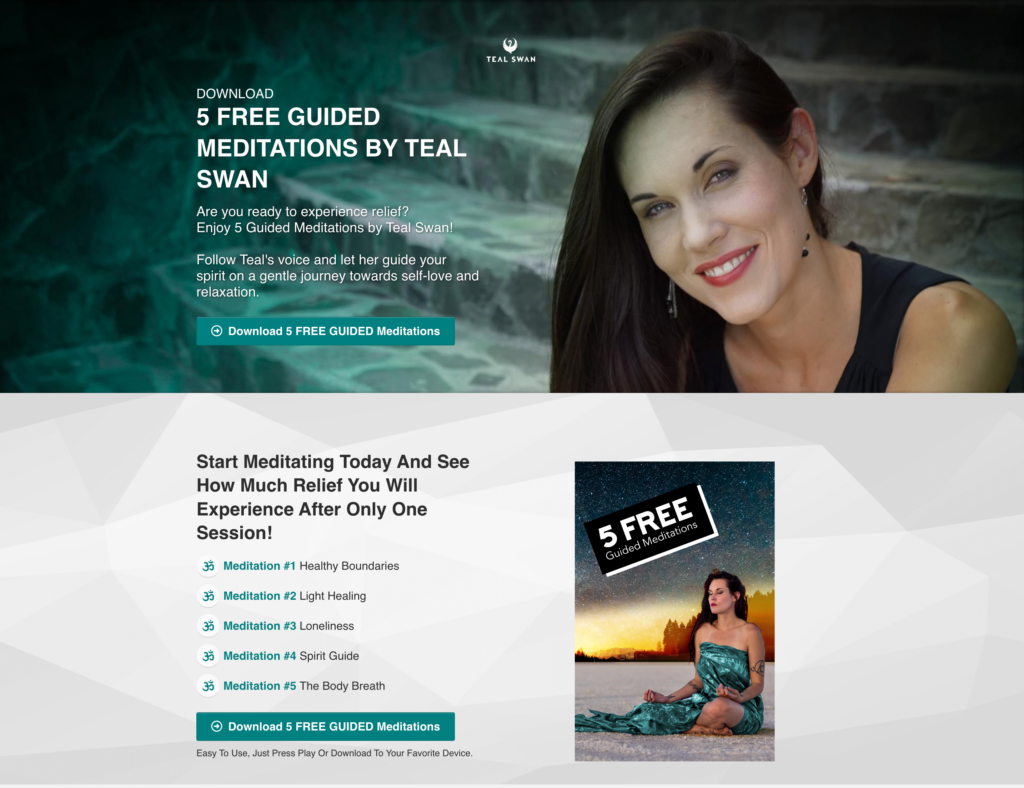
Really, the only place you don’t want to show off your lead magnet offer is on your course sales pages. If someone’s checking out your course, no need to distract them from the ultimate goal… selling your course.
But otherwise, show off that lead magnet loud and proud and build your money maker… your email list.
How to keep your subscribers warmed up
Here’s a HUGE mistake a lot of course creators make.
They create a great lead magnet. They build their list. And then, after they deliver their lead magnet… they NEVER email their subscribers again. Okay, maybe they email them a couple of times a year, but it might as well be never.
This email “radio silence” is usually due to two unwarranted fears.
First, the course owner is afraid all their subscribers will get their email and crush the unsubscribe link. Second, the course owner doesn’t know what to talk about in their emails.
So you don’t fall victim to this mistake, let me make this clear…
… The purpose of building an email list is to email your subscribers. And the purpose of emailing your subscribers is to sell your course. Because as we have already established, email marketing is the best way to sell your online course.
This doesn’t mean you should send daily “buy my course” emails. It means that you should do the same thing in your emails with your free content and, to a certain extent, your course.
Use your emails to educate and nurture your subscriber’s interest in your expertise. And send your subscribers helpful information that solves their problems or entertains them..

Emailing your list often especially important if you’re building up to launch your first online course.
You want to keep your list warm. This means that your emails are landing in your subscriber’s inbox, getting read, and generating engagement regularly.
If your launch is a few months out, try to email your list at least a couple of times a week.
If your launch is coming within weeks, email your most engaged subscribers daily.
Check out this guide for a full breakdown of exactly when and what to email subscribers:
The biggest takeaway is don’t overthink your email marketing. Talk to your list as often as you can. The more you help and the more you tell, the more courses you’ll sell.
Speaking of selling courses, it’s time to get to the actual best way to sell your online course.
Yes, I know. I already said that it’s email. The real answer, though, is a bit more nuanced than that.
Email is how you grow and maintain a fresh pool of almost ready-to-buy leads. The next thing, your sales funnel, is how you convert those leads into students
Build Your Course Sales Funnel
A sales funnel is a term that describes how you attract, educate, and convert your audience into customers that buy your course.
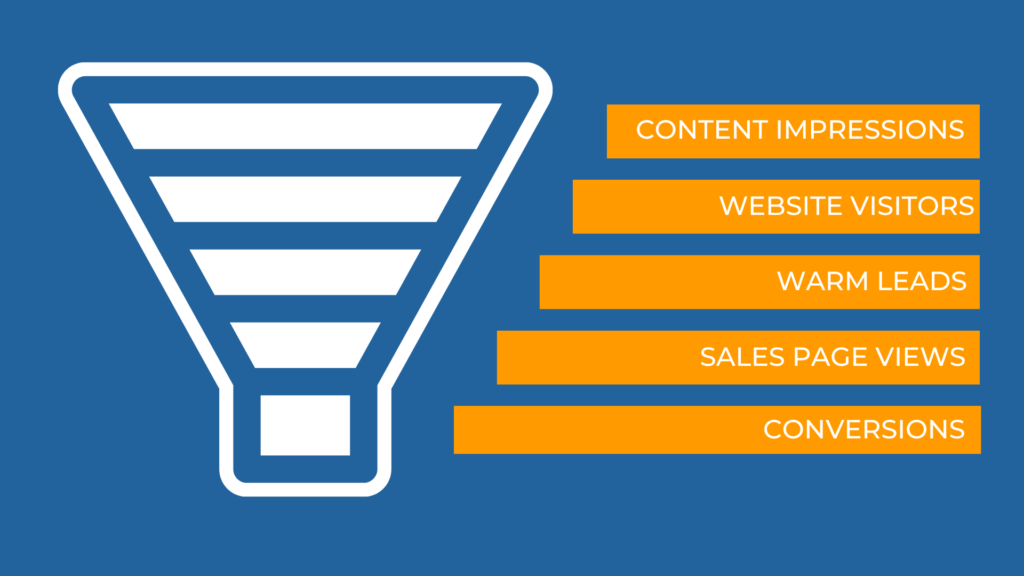
If you are unfamiliar with this marketing concept, you can learn more about it here:
We’ve already covered how to fill your course’s sales funnel.
You create content to attract people to your site. When people visit your site, you offer them a lead magnet so they’ll sign up for your email list.
The next key building block in your sales funnel is your course’s sales page.
Your sales page is the page you will send traffic to when you’re ready to sell your course.
And if you want to convert well, i.e., turn as many people as you can into customers, then you need to give them some essential information about your course.
Optimize your course’s Sales Page
Over the years, we’ve tested a lot of different sales page formats and templates.
We’ve discovered that the best course sales pages feature 15 elements (or pieces of information).
Here are those 15 essential elements, in order of how you should feature them on your course’s sales page:
- Call Out To Your Audience – Who do you help? Call them out!
- Compelling headline – There are loads of headline frameworks out there. No one type of headline works all the time. When in doubt, lead with the problem you solve. Say it loud, and make it clear.
- Sub-headline – Compelling subheadlines stop the scrollers in their tracks and get them to read
- Clear CTA – Your sales page should have clear visible CTA buttons at least every two screens
- Problem, Agitation, Solution – This is where you identify your audience’s problem, empathize with their pain, and show that you have the solution they need!
- Speed to results and/or Future cast – Show them how fast your course can get them the results they desire
- Meet the instructor/Your credentials – Let them know who you are and what makes you the expert on what you teach
- Talk about the benefits – Show them how much better life will be after they have your solution
- Social Proof – Show off your testimonials and endorsements
- Offer in detail – Make sure your offer is clear by showing them everything that comes with your course
- Bonuses – Feature and explain your bonuses
- Guarantees – Reverse your buyer’s risk with a straightforward guarantee
- Close with a reminder – Summarize the offer and the value of your course
- FAQ – Answer all their questions before they have to ask them
- Scarcity/Urgency – Show them why it’s important to start your course now.
Order Bumps and Upsells
Complementary offers are the next most important revenue generator in your course sales funnel.
If you haven’t even launched your first course yet, talking about complementary offers may seem like putting the cart before the horse.
It’s not. Allow me to explain.
Complementary offers, in the form of two mechanisms known as order bumps and upsells, will add as much as 50% more revenue to your course sales.
And the better your order bumps and upsell complement your primary course, the more they will sell.
So the best time to develop the complementary products you’ll order bump and upsell is during your online course creation.
To clarify why these complementary offers are critical parts of your sales funnel, let me show you how they work.
Your course’s order bump
After someone clicks the “buy” or “add to cart” button on your sales page, they’ll land on your course checkout page.
And on your checkout page is where you feature your order bump.
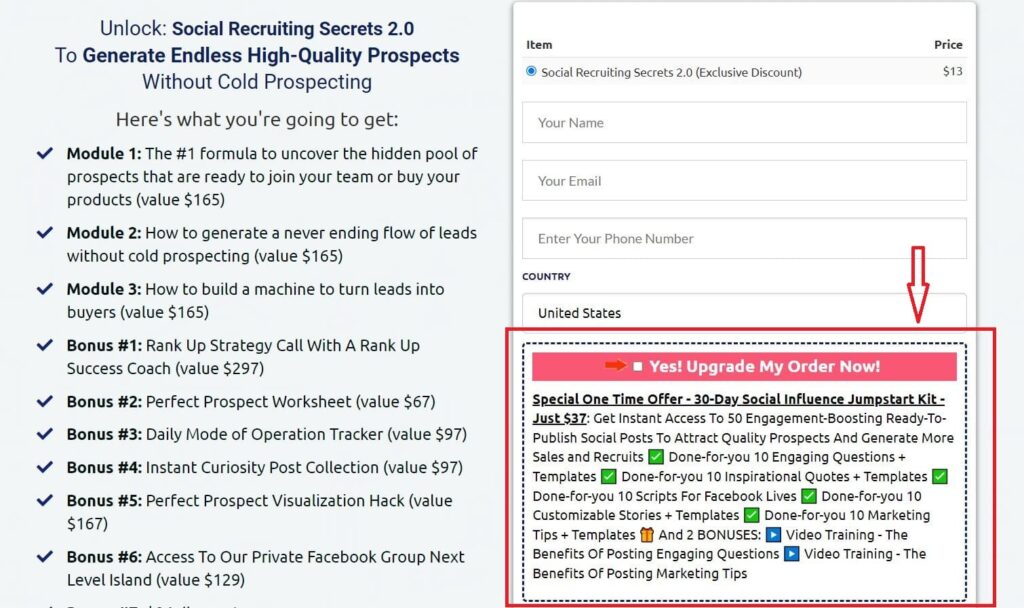
Your order bump is a simple little “fast action” offer.
It doesn’t have to be anything extravagant. It can be a workbook that goes with your course. Or a template that makes taking action on your course easier.
It can even be an exclusive video showing an add-on tactic or technique that’s not in your primary course.
The great thing about this offer is you don’t have to create another page to sell it. All you need is one paragraph of sales copy and a tick box.
And anywhere from 20% to 60% of your customers will add it to their order.

On average, your order bump will increase the revenue your course earns by 15%.
15% may sound like a small amount.
But at the end of the year, when you add up your sales totals, that additional 15% will look pretty big on your bottom line.
Your upsell
The next important complementary offer in your course’s sales funnel is an upsell.
An upsell is an offer you feature after someone buys your course.

Typically upsells feature offers for premium or high-ticket products, such as a “VIP masterclass” or memberships.
But you can upsell just about anything that complements your primary course, and it will sell well.
For example, you could upsell access to the “behind the scenes” coaching content (as long as it’s valuable to the customer).
Or you could upsell a set of premium templates or ongoing access to VIP training content.
On average, 10 to 20% of your students will buy your upsell.
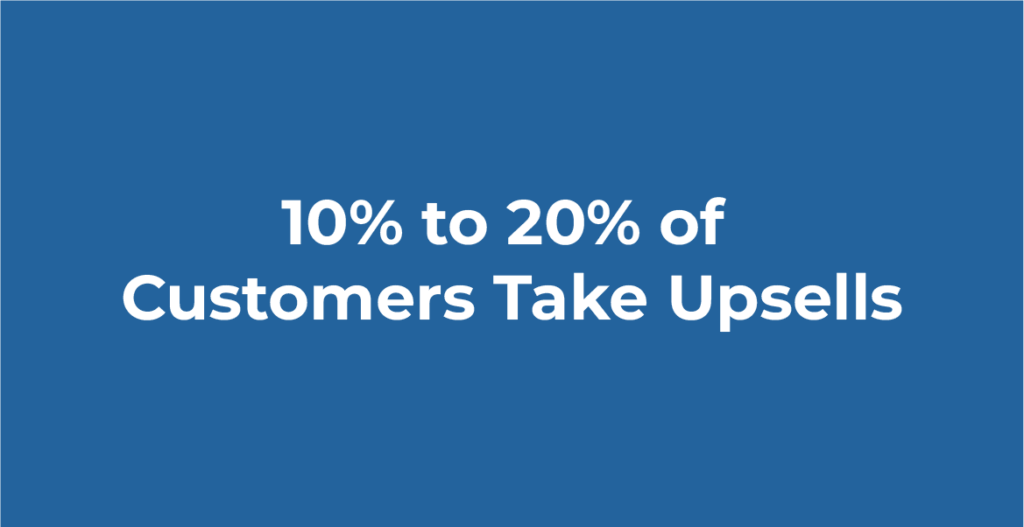
And, on average, it will increase your total sales by another 20%
To learn more about how to offer, package, price, and optimize your order bumps and upsells, check out this in-depth guide:
Most online course platforms will allow you to add order bumps and upsells to your sales funnel.
Our recommendation for the best online course funnel builder is ClickFunnels.
More email marketing to increase your sales
I already addressed how important email is to your course sales (a couple of times).
So I’ll keep this brief… but to drive the point home… If you run two email promotions to your list per month, you can expect to increase your course sales by 50% or more.
Add a Tripwire Offer
A Tripwire is an offer designed to attract and convert new customers who might be hesitant to plunk down large chunks of money for your course.
It’s an advanced sales funnel technique.
But once, you have the rest of your funnel dialed, it’s worth taking the time to implement.
You can learn more about how to create a Tripwire Offer for your course here:
Track your results
The fastest way to improve your sales is to understand results. And you can’t truly understand your results unless you track and measure them. But what should you track and measure?
The metrics that matter
In general, you want to track the data that correlates to your customer’s journey. This data will represent the performance of your sales funnel from the top down. So starting at the top, you want to track:
Impressions
This is a measure of how many people see your content. If you use social media to share your content, the platform will collect this data for you.
And if you’re leveraging SEO, the best place to find this data is in Google Search Console.
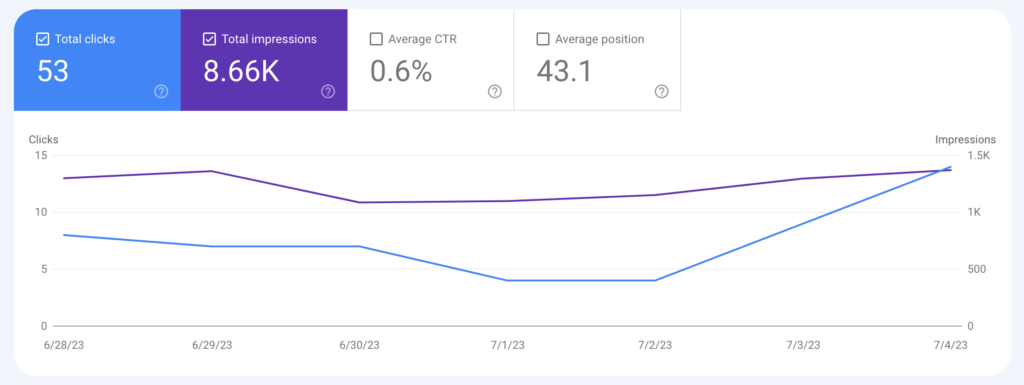
Traffic
This is the number of people who come to your website. You can track this using pageviews or sessions.
Sessions is a more accurate representation of unique visitors. But it really doesn’t matter which one you choose to track. They both serve as good barometers of site traffic.
Email Opt-in Rate and Total Opt-ins
Your opt-in rate is the number of people who sign up for your email list divided by your total site traffic.

Total opt-ins are simply a count of everyone who subscribes to your email list.
Sales page conversion rate
This is the number of people who come to your sales page and buy your course divided by the total number of people who see your sales page.
Number of course sales and total revenue
The number of course sales is the count of individual people who buy your course.
Total revenue is the amount of money your course earns
Order Bump and Uspell sales, take rate, and total revenue
Your order bump sales is a count of the order bumps you sold.
The order bump take rate is the number of people who buy your order bump divided by the total number of people who converted on your course checkout page.
And the total revenue is the total amount of money your order bumps generated.
You also want to track the same metrics for your upsells.
How to track your course’s sales results
In general, you want to track your KPIs weekly. You don’t need any fancy tools to do this. Just input them into a spreadsheet every week so you can see the trends over time.
When you’re doing a launch, you may want to track your course sales metrics daily. Tracking daily will help you make adjustments mid-launch if you notice overperformance or underperformance in an area of your funnel.
Scale Your Success
Once you’ve launched your course, and dialed in your offer and your funnel, you can start to scale your sales. Here are the most common and fastest ways to ramp up course sales.
More courses
It’s almost always easier to sell more to existing customers than to attract new ones.
So once you’ve cultivated a sizable and satisfied customer base, launching a new course can bring in a lot of revenue.
Also, your new courses can become key cogs in your funnel for upselling and cross-selling.
More content
If your sales funnel is performing well, filling it with more traffic only makes sense.
And now that you have a profitable online course, you have money to invest in content creation.
So if you want to ramp up your revenue, consider investing in a team or tools to help you crank out more content and attract more new students.
Advertising
Advertising is the toughest and most costly way to scale your course sales.
When you start advertising your course, you want to have your entire sales funnel buttoned up.
Because the majority of your profits won’t come from your initial course sales.
Most advertising course funnels are “break-even” on the first sale they generate.
The profits come from acquiring a customer who loves your content so much that they buy multiple courses or products from you.
So if you’re going to invest in advertising, make sure you have your funnel dialed in. And you also want to have the capital to support ad testing for several months at least.
Partners and affiliates
Partnering with other course sellers or authorities in your niche is a fast way to increase your traffic, grow your email list, and attract more customers.
Here are a few ways you can partner with other course sellers and influencers:

Lead magnet swaps – They promote yours and you promote theirs with the goal of growing your email lists
Guest Webinars – You do a webinar for their audience. And at the end of that webinar, you sell your course or promote your lead magnet
Affiliate commissions – Your partners (or, in this case, affiliates) promote your course, and you give them a percentage of every sale they help you generate
Course promo swaps – You promote their course to your email list, and they promote yours to theirs
Guest content – You provide free content for your partner, and they link to your course website or sales page
Recapping the Best Way to Sell Your Online Course
We covered a lot of ground in this guide. Let’s pull back and recap the steps real quick so you can see the big picture.
Step #1: Create a High-Value Proposition for your course that will resonate with your target audience
Step #2: Use your best talents to create content that attracts your target audience
Step #3: Stock your email list full of subscribers who are eager to learn with you
Step #4: Build your course’s sales funnel
Step #5: Track the metrics that matter so you can measure your progress
Step #6: Scale your course sales by adding more courses, more content, advertising, or partnering with other course owners and affiliates
If you want a custom plan that assesses current course sales and shows where your biggest opportunities for improvement are, check out our Course Creator’s Profit Increase Report:
And if you want to see our recommendation for the best online course platform to use when selling courses from your own website, check out this guide:



